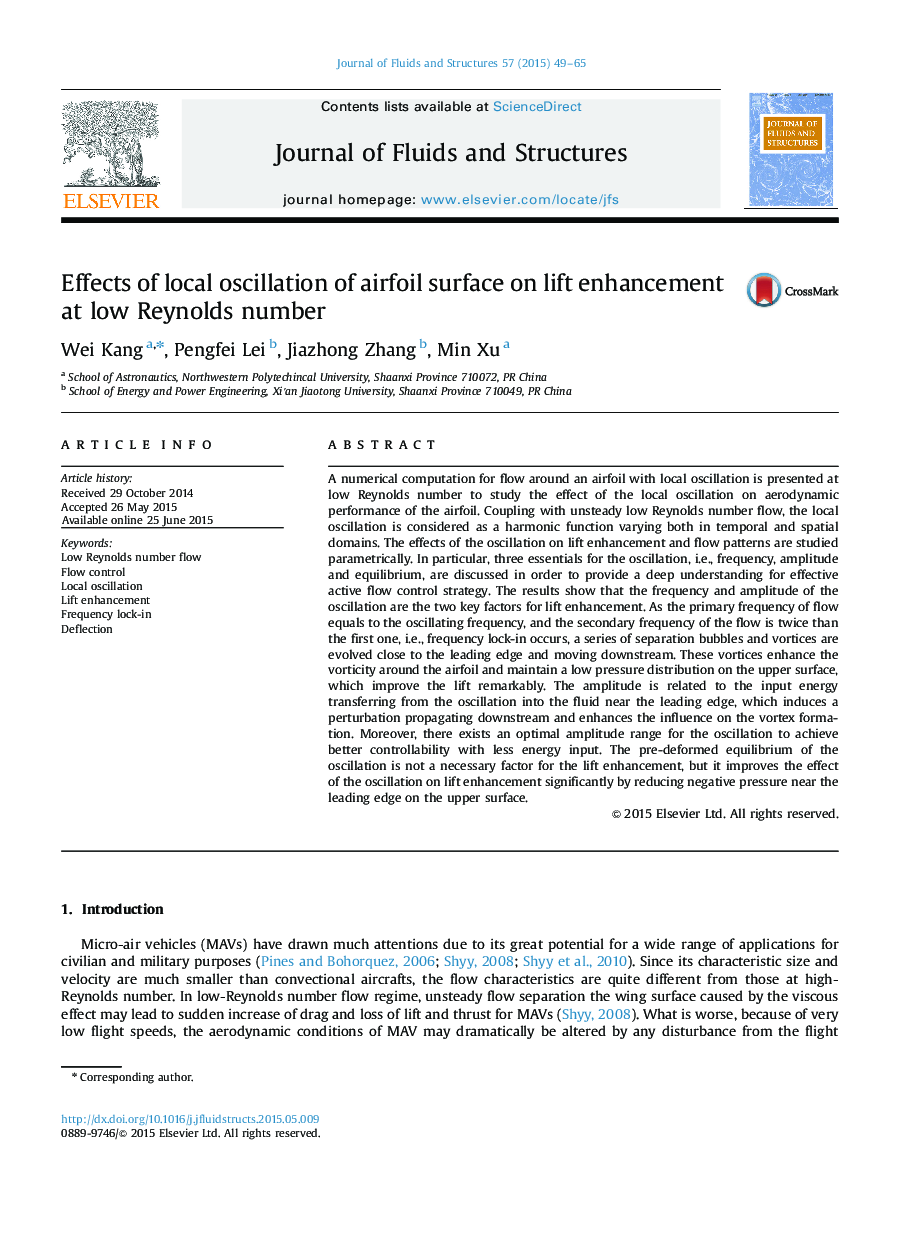| Article ID | Journal | Published Year | Pages | File Type |
|---|---|---|---|---|
| 792599 | Journal of Fluids and Structures | 2015 | 17 Pages |
•The effects of local oscillations on flow evolution and lift are discussed.•Distinct flow patterns related to the oscillating frequency are categorized for lift enhancement.•The equilibrium reinforces the effect of the oscillation on lift improvement.•There exists an optimal amplitude range for better controllability with less energy input.
A numerical computation for flow around an airfoil with local oscillation is presented at low Reynolds number to study the effect of the local oscillation on aerodynamic performance of the airfoil. Coupling with unsteady low Reynolds number flow, the local oscillation is considered as a harmonic function varying both in temporal and spatial domains. The effects of the oscillation on lift enhancement and flow patterns are studied parametrically. In particular, three essentials for the oscillation, i.e., frequency, amplitude and equilibrium, are discussed in order to provide a deep understanding for effective active flow control strategy. The results show that the frequency and amplitude of the oscillation are the two key factors for lift enhancement. As the primary frequency of flow equals to the oscillating frequency, and the secondary frequency of the flow is twice than the first one, i.e., frequency lock-in occurs, a series of separation bubbles and vortices are evolved close to the leading edge and moving downstream. These vortices enhance the vorticity around the airfoil and maintain a low pressure distribution on the upper surface, which improve the lift remarkably. The amplitude is related to the input energy transferring from the oscillation into the fluid near the leading edge, which induces a perturbation propagating downstream and enhances the influence on the vortex formation. Moreover, there exists an optimal amplitude range for the oscillation to achieve better controllability with less energy input. The pre-deformed equilibrium of the oscillation is not a necessary factor for the lift enhancement, but it improves the effect of the oscillation on lift enhancement significantly by reducing negative pressure near the leading edge on the upper surface.
